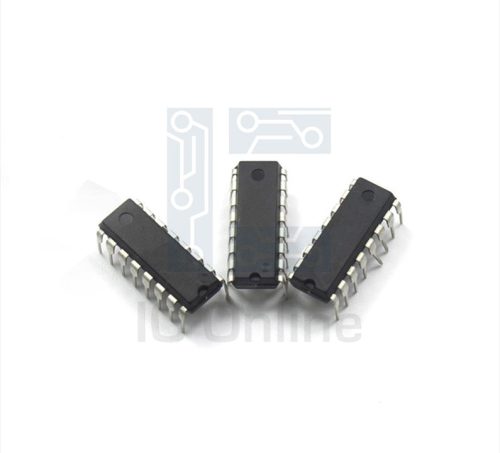STGYA50H120DF2 Overview
The STGYA50H120DF2 is a high-performance silicon carbide (SiC) MOSFET designed for industrial power electronics applications requiring efficient switching and robust thermal management. With a blocking voltage of 1200 V and a continuous drain current of 50 A, this device enables compact, reliable, and energy-efficient designs in demanding environments. Its advanced packaging and low gate charge contribute to reduced switching losses, making it suitable for high-frequency converters and motor drives. Engineers and sourcing specialists rely on the STGYA50H120DF2 for improving power density and system reliability in next-generation industrial equipment. Learn more at IC-fabrikant.
STGYA50H120DF2 Technical Specifications
| Parameter | Waarde |
|---|---|
| Technology | Silicon Carbide (SiC) MOSFET |
| Drain-Source Voltage (VDS) | 1200 V |
| Continuous Drain Current (ID) | 50 A |
| Gate Threshold Voltage (VGS(th)) | 3 V (typical) |
| Maximum Gate-Source Voltage (VGS) | ??20 V |
| Total Gate Charge (Qg) | 31 nC (typical) |
| RDS(aan) (Static Drain-Source On-Resistance) | 50 m?? (typical) |
| Operating Junction Temperature (TJ) | -55 to +175 ??C |
| Type verpakking | TO-247-3L |
STGYA50H120DF2 Key Features
- High Voltage Blocking Capability: Rated for 1200 V, enabling use in medium and high voltage industrial power systems.
- Low On-Resistance: Typical RDS(aan) of 50 m?? minimizes conduction losses, improving overall system efficiency.
- Fast Switching Performance: Low total gate charge reduces switching losses, supporting high-frequency operation in power converters.
- Breed bedrijfstemperatuurbereik: Supports junction temperatures up to 175 ??C, ensuring reliability in harsh industrial environments.
Typische toepassingen
- Industrial motor drives requiring efficient, high-voltage switching components for improved energy savings and performance.
- Renewable energy inverters such as photovoltaic and wind power systems that demand high voltage and thermal robustness.
- Power supplies and UPS systems needing compact, reliable SiC MOSFETs for better power density and thermal management.
- Electric vehicle onboard chargers and DC-DC converters where low losses and high switching frequencies are critical.
STGYA50H120DF2 Advantages vs Typical Alternatives
This device offers superior performance compared to traditional silicon MOSFETs and IGBTs by combining high blocking voltage with low on-resistance. Its silicon carbide technology ensures lower switching and conduction losses, improving energy efficiency and thermal management. The robust junction temperature rating and optimized package design enhance reliability and ease of integration in industrial applications, making it a preferred choice for engineers focused on power density and system lifetime.
Best verkochte producten
STGYA50H120DF2 Brand Info
The STGYA50H120DF2 is manufactured by STMicroelectronics, a global leader in semiconductor solutions. Known for pioneering silicon carbide technology, STMicroelectronics provides power devices engineered for high efficiency and reliability in industrial, automotive, and renewable energy markets. This product exemplifies ST??s commitment to advancing power electronics with innovative SiC MOSFETs that support next-generation applications requiring high voltage, high current, and superior thermal performance.
FAQ
What is the maximum drain-source voltage rating of this SiC MOSFET?
The device is rated for a maximum drain-source voltage of 1200 V, making it suitable for medium to high voltage industrial power applications.
Uitgelichte producten

"Koop MAX9312ECJ+ Precisie-spanningsvergelijker in DIP-pakket voor betrouwbare prestaties"

0339-671-TLM-E Model - TLM-E pakket met hoge prestaties voor verbeterde functionaliteit

1-1415898-4 Connector Housing, Electrical Wire-to-Board, Receptacle, Packaged

1-1462039-7 Electrical Connector, PCB Mount, Through-Hole, 2-Pin Header Socket
How does the low on-resistance benefit system design?
A low RDS(aan) of approximately 50 m?? reduces conduction losses during operation. This improves efficiency and reduces heat generation, which can lead to smaller heat sinks and more compact power modules.






